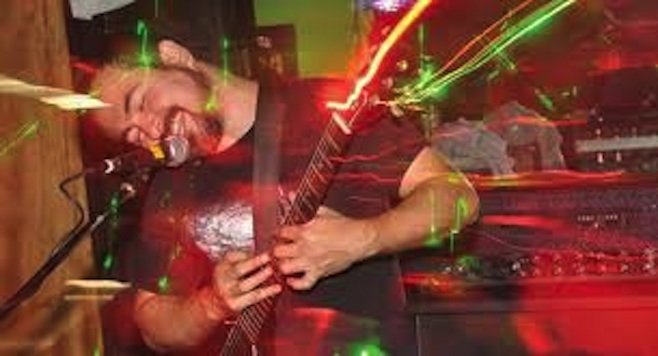 Facebook
Facebook
 X
X
 Instagram
Instagram
 TikTok
TikTok
 Youtube
Youtube

Sure, 2012 was an over-hyped fail fest, but make no mistake about it, the world is coming to an end. In just six billion years, the sun’s core will run out of hydrogen fuel, causing it to collapse under its own gravitational pull. As the core contracts and increases in temperature, the outer inferno of the sun will expand, either consuming the Earth in fire or just boiling its surface to hellacious extremes.
To make all of this a bit more bleak and defeating, a collection of local experimental musicians and physics enthusiasts will be transforming the captivating saga of staricide into death-metal performance Our Star Will Die Alone.
“It’s pretty interesting because there are many ways to interpret/sonify data,” says musician Bobby Bray, who will be performing alongside UCSD faculty members Michael Trigilio, Adam Burgasser, and Tara Knight.
“The typical scientific approach would be a one-to-one connection — for example, if the light from the star increases, change the pitch of a note by the same amount. The benefit of the practice is that you can harness the power of our pattern-seeking abilities and possibly discover contingencies that computers aren’t programmed to notice yet. An artistic viewpoint can include a heavier emphasis on deciding what a data point might correlate to. In this case, graphs of information such as star size and surface pressure over time were superimposed on top of a limited musical scale, resulting in metal riffs for guitar. My part in this heavy-metal(s) band is the soloist, using effects I created or modified in Pure Data such as bit crusher and a real-time glitch.”
Our Star Will Die Alone is part of UCSD graduate/faculty presentation Project Planetaria, October 4 and 5, 10:30 p.m., at UCSD’s Galbraith Hall South.


Sure, 2012 was an over-hyped fail fest, but make no mistake about it, the world is coming to an end. In just six billion years, the sun’s core will run out of hydrogen fuel, causing it to collapse under its own gravitational pull. As the core contracts and increases in temperature, the outer inferno of the sun will expand, either consuming the Earth in fire or just boiling its surface to hellacious extremes.
To make all of this a bit more bleak and defeating, a collection of local experimental musicians and physics enthusiasts will be transforming the captivating saga of staricide into death-metal performance Our Star Will Die Alone.
“It’s pretty interesting because there are many ways to interpret/sonify data,” says musician Bobby Bray, who will be performing alongside UCSD faculty members Michael Trigilio, Adam Burgasser, and Tara Knight.
“The typical scientific approach would be a one-to-one connection — for example, if the light from the star increases, change the pitch of a note by the same amount. The benefit of the practice is that you can harness the power of our pattern-seeking abilities and possibly discover contingencies that computers aren’t programmed to notice yet. An artistic viewpoint can include a heavier emphasis on deciding what a data point might correlate to. In this case, graphs of information such as star size and surface pressure over time were superimposed on top of a limited musical scale, resulting in metal riffs for guitar. My part in this heavy-metal(s) band is the soloist, using effects I created or modified in Pure Data such as bit crusher and a real-time glitch.”
Our Star Will Die Alone is part of UCSD graduate/faculty presentation Project Planetaria, October 4 and 5, 10:30 p.m., at UCSD’s Galbraith Hall South.
Comments